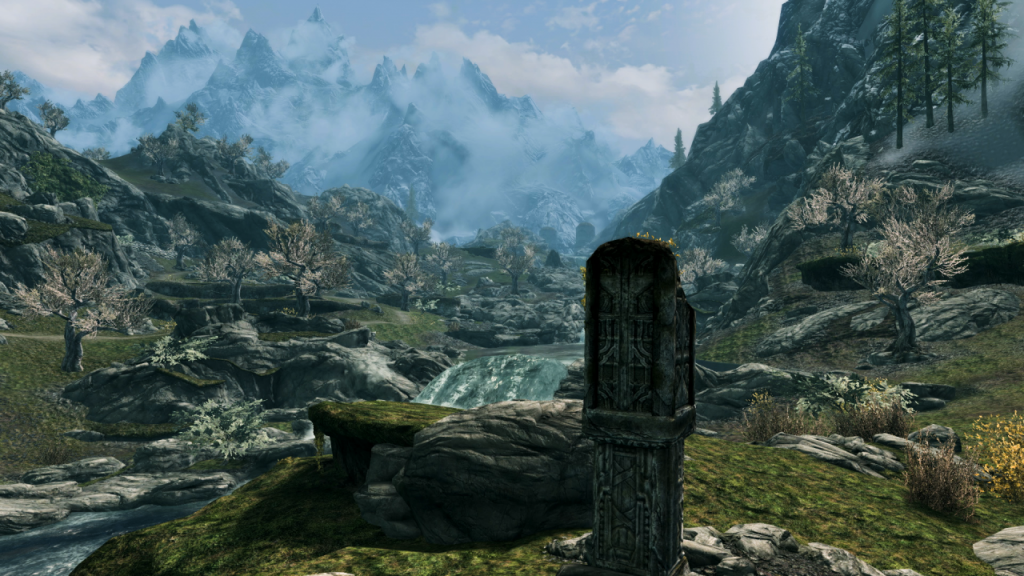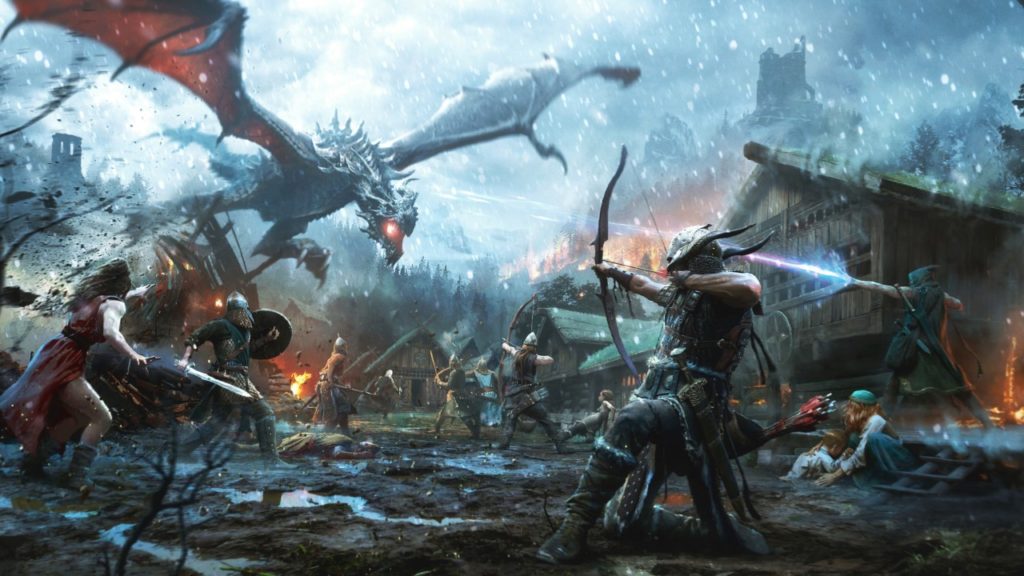Since I mostly game from my aging gaming laptop these days, I have been trying my hand at a couple of older games these last few months.
These games varied from underrated gems such as Prince of Persia: Warrior Within to first person classics like Call of Duty: Black Ops II. By the time I started Skyrim last month, I was already looking forward to getting immersed in the vast world.
Skyrim has always been one of those purer RPGs that are more about the sandbox worlds than characters and questlines. I have always found the lore to be fascinating too, with the dragons being the first living beings and the legends of the Dragonborn. Most people however, enjoy exploring the world (and doing side quests). And for good reason, too.
Not only is the world of Skyrim vibrant and majestic, it’s also littered with ruins: with ancient tombs and fallen Dwemer cities, and even religious shrines to Daedric Princes. The lore is transmitted as much through exploring these places as through reading the books spread across the world.

While there are plenty of quests in Skyrim, they are hardly as captivating as the quests you find in Bioware games, or as personal as some quests felt in the Witcher 3. The character work is, unfortunately, quite wooden. Some characters, like Paarthurnax, are fascinating to discover and converse with, but those are few and far in between.
The combat also feels clunky, especially in comparison to the more satisfying mechanics of titles such as Dragon’s Dogma or The Witcher 3. The skill and levelling systems are robust: this time around, I am using a two-handed and heavy armor build, along with alternate options of double-wielding and archery. It has felt rewarding so far, but it also feels, in a way, monotonous. There’s not much you can in combat other than attack or block, and you start to get weary of dungeons after clearing them for the first ten or twenty hours.
But it’s the game’s ability to surprise you that keeps you invested after the novelty wears off.
Some questlines, such as the Companions and the Dark Brotherhood, have some nice twists, and the encounters with the Daedric Princes are also welcome surprises in their own ways. The awe one feels when Paarthurnax descends upon the throat of the world and greets you with a shout is still palpable.

Of course, like all things Bethesda, most things in Skyrim lack depth, in terms of storytelling. It’s not that the plot is bad: it’s that it feels like a remnant of an older kind of video game storytelling. Dragon’s Dogma also has a similar kind of narrative. Unlike the Witcher 3, there’s not much replayability, in terms of narrative, when you come back to these games.
The graphics, of course, is pretty outdated, but that’s where mods come to the rescue. I am currently only using some visual mods. The Skyrim modding community is still strong after all these years, and there are plenty of mods which introduce new content in the form of expanded maps and new quests. At the rate I am playing, it will probably take me another month or two to get done with the standard quests.
Right now, I am in no hurry to finish them: I am still discovering the map on foot, and reacquainting myself with the main quest. Right now, I am fighting for the Imperial Legion, and have been called to hold a truce between the Legion and the Stormcloaks so that everyone can focus on the dragon threat.
That’s new to me, because by this point in my original playthrough I had already won the civil war in favor of the Empire. It’s great that, eight years later, the game can still surprise me like that.
Will there be another Skyrim in the near future? Well, Elder Scrolls VI definitely could fill that void. But there’s been no news on that front, and it looks like we will have to wait a few more years. For now, Skyrim will have to do. And that’s not a bad prospect by any means.







